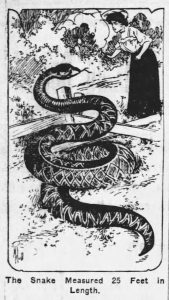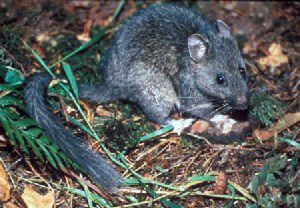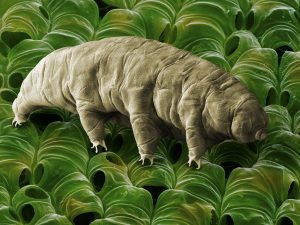Podcast: Play in new window | Download (Duration: 13:24 — 14.9MB)
Thanks to Murilo, Alexandra, and Joel for their suggestions this week!
The bird sounds in this episode come from xeno-canto, a great resource for lots of animal sounds!
A cactus wren [picture by Mike & Chris – Cactus WrenUploaded by snowmanradio, CC BY-SA 2.0, https://commons.wikimedia.org/w/index.php?curid=15876953]:

The sultan tit [photo by By Dibyendu Ash – CC BY-SA 4.0, https://commons.wikimedia.org/w/index.php?curid=72070998]:
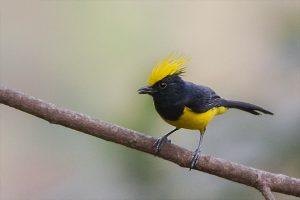
A female scarlet tanager [photo by Félix Uribe, CC BY-SA 2.0, https://commons.wikimedia.org/w/index.php?curid=81340425]. The male is red with black wings:
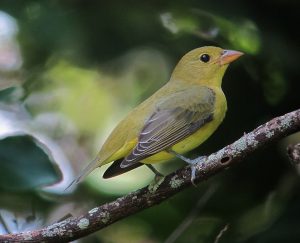
The Northern cardinal:
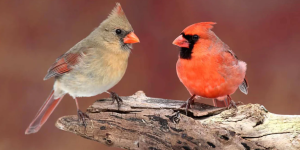
The yellow grosbeak [photo by Arjan Haverkamp – originally posted to Flickr as 2008-08-23-15h00m37.IMG_4747l, CC BY 2.0, https://commons.wikimedia.org/w/index.php?curid=9596644]:
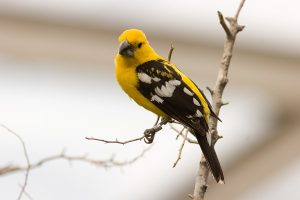
The purple martin isn’t actually purple [photo by JJ Cadiz, Cajay – Own work, CC BY 3.0, https://commons.wikimedia.org/w/index.php?curid=4255626]:
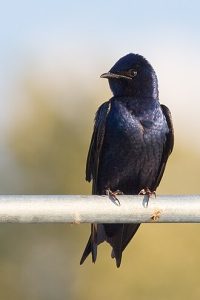
The dusky thrush [photo by Jerry Gunner from Lincoln, UK Uploaded by snowmanradio, CC BY 2.0, https://commons.wikimedia.org/w/index.php?curid=20762838]:

The European rose chafer, not a bird [photo by I, Chrumps, CC BY-SA 3.0, https://commons.wikimedia.org/w/index.php?curid=2521547]:
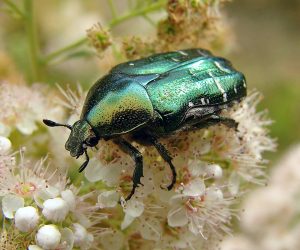
Show transcript:
Welcome to Strange Animals Podcast. I’m your host, Kate Shaw.
This week we’re going to learn about a lot of little birds that deserve more attention, because they’re cute and interesting. Thanks to Murilo, Alexandra, and Joel for their little bird suggestions!
All the birds we’ll talk about today are called passerines, because they belong to the order Passeriformes. They’re also sometimes referred to as perching birds or songbirds, even though not all passerines sing. Passerines are common throughout the world, with more than 6,500 species identified. I’ve seen about 150 of those species, so clearly I need to work harder as a birdwatcher.
Passerines are referred to as perching birds because of their feet. A passerine bird has three toes that point forward and another toe pointing backwards, which allows it to wrap its toes securely around a twig or branch to sit. Its legs are also adapted so that the toes automatically curl up tight when the leg is bent. That’s why a sleeping bird doesn’t fall off its branch.
Let’s start with one of Murilo’s suggestions, the wren. Wrens are birds in the family Troglodytidae, and are usually very small with a short tail, a pointy bill that turns slightly downward at the tip, and brown plumage. It mainly eats insects and larvae that it finds in nooks and crannies of trees, and many species will investigate dark places like hollow logs, the openings to caves, or your apartment if you leave the back door open on a warm day. Many sing beautiful songs and have very loud voices for such little bitty birds.
Most wrens are native to the Americas, including the canyon wren that’s native to western North America in desert areas. It’s cinnamon-brown with a white throat and an especially long bill, which it uses to find insects in rock crevices. It lives in canyons and has a more flattened skull than other wrens, which means it can get its head into crevices without hurting itself. No one has ever seen a canyon wren drink water, and scientists think it probably gets all the water it needs from the insects it eats. Where do the insects get the water they need? That’s an episode for another day.
This is what a canyon wren sounds like:
[bird sound]
Not every bird that’s called a wren is actually in the family Troglodytidae. Some just resemble wrens, like an unusual bird that Murilo brought to my attention. It’s called Lyall’s wren but it’s actually in the family Acanthisittidae, and it was once widespread throughout New Zealand. By the time it was scientifically identified and described in 1894, it was restricted to a single island in Cook Strait.
Lyall’s wren was flightless, and only five passerines are flightless as far as we know. All five were island birds who have since gone extinct, which is unfortunately the case with Lyall’s wren too. It was greenish-brown with a yellow eye stripe and its tail was just a little short nub. We don’t know much about it because between 1894 when a lighthouse was built and some families moved to the island to work at the lighthouse, bringing their housecats, and 1925 when the feral cat colony on the island was finally killed off, all the remaining Lyall’s wrens were eaten by cats or killed by people to sell as museum specimens. To be clear, it’s entirely the fault of people that the bird went extinct, because they brought the cats to the island and let them run loose. The bird probably actually went extinct in 1895, just one year after cats were introduced to the island.
Murilo also suggested some little birds called chickadees and tits, which belong to the family Paridae. They’re very small, often brightly colored or with bright white markings, with short bills that help them crack seeds open. They also eat insects. They’re not found in South America or Australia, but they’re very common in North America, Eurasia, and most of sub-Saharan Africa. Many species love to visit bird feeders, and since they’re cute and active little birds, people are happy to have them around.
Some species in this family have crests, which makes them even cuter. The tufted titmouse, which is found in eastern North America, has a little tufted crest on its head, for instance. It’s a soft gray-blue in color with patches of rusty-red under its wings, and white underneath. The gray crested tit lives in western Europe and also has a fluffy crest on its head. It’s gray-brown with a thin black and white ring around its neck and a buff-colored underside. The yellow tit lives only in forests in central Taiwan and is a gorgeous dark blue with bright yellow underneath and on its face, with a darker crest. It’s so beautiful that it’s becoming rare, since people trap the birds to sell to disreputable collectors. The sultan tit is even more spectacular, if that’s possible, since the male is black with bright yellow underparts and a bright yellow crest. It lives in parts of south Asia and some subspecies have a black crest instead.
This is what a sultan tit sounds like:
[bird sound]
Another spectacular bird is one Alexandra suggested, the summer tanager. It’s a common summer visitor in the eastern and southwestern United States that winters in Central and northern South America. The male is a bright, cheerful red all over while the female is yellow. The western tanager is a close relation that lives in western North America, wintering in Mexico. The male has a mostly black back with a yellow rump and yellow underneath, with red and orange on his face. Females are yellowy-green and gray. The scarlet tanager is also similar, although the male is red with black wings and the female is yellowy-green and gray. They eat insects and fruit, and spend a lot of time in the very tops of trees.
This is what a scarlet tanager sounds like:
[bird sound]
Despite their names, all three of these tanagers aren’t actually tanagers. Tanagers are members of the family Thraupidae and are native to central and South America. Many of them are brightly colored and absolutely gorgeous, like the red-legged honeycreeper that’s common in Central and parts of South America. The male has a black back and tail and is bright blue on the rest of his body, except for a black mask over his eyes. His long curved bill is also black, but his legs are bright red. The female has red legs but she’s mostly greeny-yellow.
The North American tanagers are actually more closely related to the cardinal than to other tanagers, and are placed in the family Cardinalidae. The family is named after the northern cardinal, which is common throughout most of the United States and parts of Mexico. The male is bright red with black around his bill, while the female is more of a rosy brown color. Both have red bills and tufted crests. In North America, the cardinal appears on a lot of Christmas cards because its bright red plumage against a snowy background is so cheerful in winter.
This is what a northern cardinal sounds like:
[bird sound]
Alexandra also suggested the blue grosbeak, while Joel suggested the yellow grosbeak. Both are also members of the family Cardinalidae. The blue grosbeak lives in much of the United States in summer and spends the winter in Mexico and Central America. The male is blue with black and rufous markings and a silvery-gray beak, while the female is rufous-brown and gray. The yellow grosbeak lives along the Pacific slope of Mexico and may be the same as the golden grosbeak that lives in western South America, or a very close relation. Scientists aren’t sure yet. The male is a bright golden yellow with black and white wings and a black bill, while females are a less conspicuous green-yellow. The yellow grosbeak is larger than the blue but they’re both pretty big and robust. They eat insects and lots of other small animals like snails and spiders, along with fruit and seeds. Sometimes a yellow grosbeak will show up farther north, in the United States, and birdwatchers lose their minds with excitement.
This is what a yellow grosbeak sounds like:
[bird sound]
Joel also suggested the purple martin, a type of swallow that’s common throughout the Americas. It’s not purple but it is a dark blue-black color with iridescence that reflects light. This makes the bird look anywhere from dark purple to blue depending on the angle of the light. The male is much darker than the female, who is more gray-blue in color. It spends the summer in North America, raising babies and eating lots of insects, then migrates to South America to spend the winter.
This is what a purple martin sounds like:
[bird sound]
Another Joel suggestion is the dusky thrush, which is another passerine that migrates a long distance. It spends the summer in Siberia and nearby areas to nest, then flies south to spend the winter in southern China, Japan, India, Vietnam, Korea, and other nearby areas. It’s mostly brown on its back and white underneath with lots of speckles, and a light stripe over its eye. Males and females look very similar. It eats insects, spiders, worms, seeds, and berries and spends a lot of its time on the ground. Every so often a dusky thrush will get lost during migration and end up in western Europe or Alaska, and again, birdwatchers in those areas go nuts trying to catch a glimpse of it.
This is what a dusky thrush sounds like:
[bird sound]
Let’s finish this episode with another of Joel’s suggestions, the European rose chafer. You may be wondering what kind of bird this is, and that is exactly what I was wondering. It sounds very pretty! Then I looked it up, and it’s not a bird at all, it’s a type of beetle!
The rose chafer is a big metallic-green beetle related to scarabs that grows up to 20 mm long. It’s common in Europe and some parts of southeast Asia, and is often found on rose bushes in summer. It eats flowers, including the petals, nectar, and pollen, and really likes roses.
The female rose chafer lays her eggs in the ground and the larvae eat decaying vegetation. There’s also a related beetle called the rose chafer that lives in parts of North America, but it’s sort of a muddy tan color, and while it likes to eat roses and other flowers, it also likes to eat fruit like peaches and grapes. Its larvae eat roots and can damage plants.
Since the European rose chafer is such attractive beetle, with an iridescent bronze shimmer to its emerald-green carapace, you’d think people who grow roses would like to have them on their rose bushes, but this isn’t actually the case. I guess people who grow roses want to see the roses without them being all chewed up by beetles. To bring it back to birds, birds don’t eat the rose chafer because the beetle contains toxins that make it taste awful. But they’re still really pretty.
You can find Strange Animals Podcast at strangeanimalspodcast.blubrry.net. That’s blueberry without any E’s. If you have questions, comments, or suggestions for future episodes, email us at strangeanimalspodcast@gmail.com. We also have a Patreon at patreon.com/strangeanimalspodcast if you’d like to support us for as little as one dollar a month and get monthly bonus episodes.
Thanks for listening!

